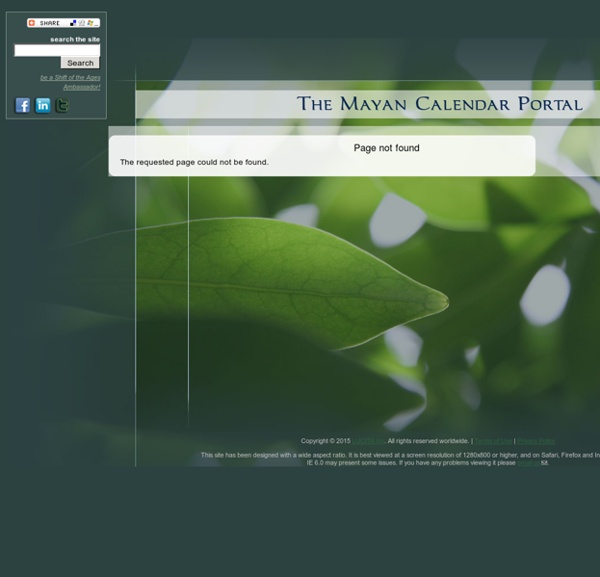Mayan Calendar Portal

Mayan Majix
Store Learning Lab \ Info Center \ Mayan Sites \ Daily Tzolkin \ Articles \ Store\ Ian Lungold \ Links Mayan Calendar - Mayan Calendar page about and use Mayan Calendars, Mayan calendar products. Mayan Horoscopes - Mayan Horoscope page about and use of Mayan Astrology, Mayan Horoscope information. Mayan Jewelry - Mayan Jewelry page, unique handmade ancient Mayan symbols in Sterling Silver Copyright 1998 - 2014 Mayan Majix , all rights reserved. Get ccna demos for six sigma certification and istqb certification with 100% success guaranteed.
Law of Time
El Calendario Galactico
This Calendar, originally programmed and designed by Alain Galtie, is a powerful tool which will greatly expand the conscious vibration of our entire world. Follow the hyperdimensional nonlinear flow of Natural Time by Synchronizing with the Tzolkin, the 260 day Sacred Calendar of the Maya. You can easily travel using many other major light/energy cycles within the Mayan Calendar. The most unique feature of this program is the ability to switch between different counts of the Tzolkin. *note: while exploring the sub menus of the program, if you want to switch calendar systems (i.e. Although much of the program is in Spanish, or Mayan, the dates and the basic descriptions for each day are in English. The emphasis of this program is not necessarily to know exactly the correct symbol for each day. In fact, there are many other civilizations throughout our galaxy who are using this type of calendar system, some of which are millions of years more evolved than humanity. Have fun!
Related:
Related:



